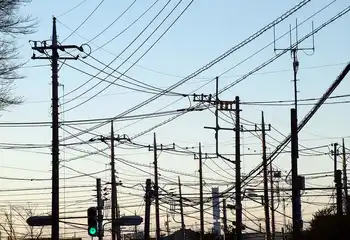Uncovering rebates and grants to help boost business
By Reuters
Substation Relay Protection Training
Our customized live online or in‑person group training can be delivered to your staff at your location.

- Live Online
- 12 hours Instructor-led
- Group Training Available
The new stimulus package promises to add millions more to these coffers.
In theory, this free money is everywhere. But in reality, how do you get your piece of the pie?
"It's not easy," says John Hardin, acting executive director of the North Carolina Board of Science and Technology in Raleigh. Hardin's group is currently overseeing the distribution of the $1 million North Carolina Green Business Fund, a grant program to help ease the environmental impacts of the state's businesses.
While many grants and incentive programs can help businesses become more energy efficient or develop green products and services, gaining access to that money is not always a simple process, Hardin notes.
"There is no turnkey way to find these programs," he says. "It takes work. Every state does it differently, and the programs are all run through different departments so you've just got to dig."
It's hard not to get overwhelmed, agrees Rachel Beckhardt, project manager for the Environmental Defense Fund (EDF) in Washington D.C. The environmental nonprofit partners with companies to help them green their businesses and navigate the myriad of grant programs.
It is, however, worth the trouble because grants and tax rebates can cut a hefty chunk off the cost of projects and purchases, such as improving the energy efficiency of a building or upgrading a delivery fleet.
These incentive programs can ease some of the pain of the necessary upfront cost and can often make the difference between moving ahead with a green project or putting it aside until the economy improves, Beckhardt says.
"In this economic climate it's easy to lose sight of the big picture," she says. "That's why it's important to reach out to groups like EDF to find these opportunities."
Beckhardt, for example, currently helps fleet managers identify programs to offset the cost of buying hybrid vehicles, such as the California Air Resources Board Alternative Fuel Vehicle Incentive Program.
"With a program like this, a fleet manager can choose a $175,000 hybrid truck over a $150,000 conventional truck and the state will kick back a $30,000 credit," she says, adding that the incentive eliminates the argument against buying hybrids because of cost. "And it cuts their gas costs in the long-term."
With a little time spent online and on the phone, it's not hard to find grant programs. The trick involves matching the grant's goals to your own needs and location.
"Energy efficiency is a good place to start," suggests Katie Romans, spokeswoman for Pacific Gas and Electric (PG&E.) The California utility currently offers 85 different energy efficiency programs for various customer sectors. The utility committed $1 billion from 2006 to 2008 to help customers make improvements, and Romans predicts that the budget for 2009-2011 could be as much as $1.8 billion.
"The incentive programs are growing exponentially, which is a testament to our customers and the response we've seen to them."
Energy efficiency programs are the easiest and cheapest projects to implement and there are many rebate and grant programs targeting these efforts, Romans notes. They also deliver long-term environmental and business benefits, making these projects easy to justify for companies looking to lower their energy costs and reduce their carbon footprints.
"It's a triple win," she says. "When you invest in more efficient technology, you can carry on with your business in the same way while using less energy and lowering your bills. The incentive programs help offset the cost of that technology."
The programs range from small rebates for purchasing energy-efficient equipment to millions of dollars for building or systems upgrades. Data center PG&E, for instance, gave $1.4 million in rebates to Sunnyvale, Calif.-based NetApp last year for building an energy-efficient data center that will save 11 million kilowatt hours in annual energy use. The money was rewarded through its non-residential new construction grant program.
Along with the rebates, the new data center is savings NetApp $1 million per year in energy costs, leading to 3,000 tons fewer greenhouse gas emissions annually, notes Romans.
"There are huge rebate and saving opportunities for data centers and we are seeing a lot of uptake in those programs."
But you don't have to be a high-tech company or planning new construction to reap significant benefits. She points to Sierra Pacific Industries, a third-generation forest products company in Anderson, Calif., that manages saw mills, co-generation facilities and wood manufacturing plants.
The company received $657,000 in PG&G rebates last year for 24 lighting and equipment upgrades at 10 facilities. The initiatives will generate energy savings of $500,000 annually and 3,800 fewer tons of emissions.
"There are programs for smaller businesses, too," she says. "It's all relative."
Weatherization of buildings is another popular rebate program theme, and a major focus for the Department of Energy, says Ed Legge, spokesman for the Edison Electric Institute, a trade group of electric companies. A large chunk of stimulus package money is earmarked for related rebate and incentive programs.
"With incentive money, these kinds of projects suddenly become affordable," he says.
If you don't find what you are looking for today, keep checking back and get your name on email lists to receive grant program updates, Legge advises. "The stimulus package is raising the water level and everyone is developing more programs."











